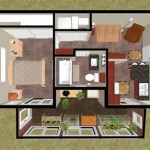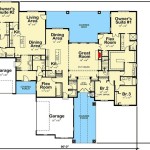Designing a house plan involves creating a comprehensive blueprint that outlines the layout, dimensions, and specifications of a home. It serves as the foundation for the construction and renovation process, ensuring that the final structure aligns with the owner’s vision and functional needs.
House plans encompass various aspects, including the arrangement of rooms, windows, doors, stairs, and plumbing systems. They provide detailed measurements and materials specifications, ensuring that builders and contractors have a clear understanding of the intended design. For instance, a house plan for a two-story residence might specify the dimensions of the living room, kitchen, bedrooms, and bathrooms, along with the placement of windows and doors for optimal natural lighting and ventilation.
Moving forward, this article will delve into the key steps and considerations involved in designing a house plan, providing valuable guidance for homeowners and aspiring architects alike.
When designing a house plan, there are several key points to consider to ensure a successful and functional outcome:
- Define needs and preferences
- Consider lifestyle and habits
- Research building codes and regulations
- Plan for future expansion
- Optimize space and flow
- Prioritize natural lighting and ventilation
- Select sustainable materials and systems
- Collaborate with professionals
- Review and refine the plan
By carefully considering these aspects, homeowners and architects can create a house plan that meets their specific needs and aspirations while ensuring a comfortable and functional living environment.
Define needs and preferences
A crucial step in designing a house plan is to clearly define the needs and preferences of the occupants. This involves considering the number of bedrooms and bathrooms required, the desired layout and flow of the home, and any specific features or amenities that are important. Lifestyle and habits play a significant role in shaping these needs. For example, a family with young children may prioritize a home with a dedicated playroom or a fenced-in backyard, while a couple who loves to entertain may prefer a home with a spacious living room and an open kitchen design.
Personal preferences also come into play when defining needs. Some individuals may prefer a traditional home with classic architectural details, while others may opt for a modern home with sleek lines and contemporary finishes. It’s important to consider the desired aesthetic and functional aspects of the home to ensure that the final design aligns with the occupants’ vision.
Furthermore, it’s essential to think about future needs and preferences when designing a house plan. If there’s a possibility of expanding the family or changing lifestyle in the future, it’s wise to incorporate flexible design elements that can accommodate these changes. For instance, a home with an unfinished basement or attic space can provide additional living area in the future, while a bedroom with an attached bathroom can be easily converted into a guest room or home office.
By carefully defining needs and preferences, homeowners can create a house plan that truly reflects their lifestyle and aspirations. This will ensure that the home is not only functional but also a comfortable and enjoyable place to live.
Consider lifestyle and habits
When designing a house plan, it’s essential to consider the lifestyle and habits of the occupants. This involves thinking about how the home will be used on a daily basis and what activities are important to the family. For example, a family with young children may need a home with a dedicated playroom or a fenced-in backyard, while a couple who loves to entertain may prefer a home with a spacious living room and an open kitchen design.
Lifestyle and habits also influence the design of individual rooms. For instance, a home chef may want a kitchen with a large island and plenty of counter space, while a book lover may prefer a home with a dedicated library or reading nook. It’s important to consider how each room will be used and what features are necessary to make it functional and enjoyable.
In addition, it’s important to think about how the home will be used as the family grows and changes. For example, a couple who is planning to have children may want to design a home with an extra bedroom or a flexible space that can be converted into a nursery or playroom. It’s also wise to consider the possibility of aging in place and design a home that can accommodate future needs, such as wider doorways and accessible bathrooms.
By carefully considering lifestyle and habits, homeowners can create a house plan that truly reflects their individual needs and aspirations. This will ensure that the home is not only functional but also a comfortable and enjoyable place to live.
Research building codes and regulations
Before finalizing a house plan, it is essential to research and understand the building codes and regulations that apply to the construction site. These codes and regulations are established by local authorities to ensure the safety and habitability of buildings. They cover various aspects of construction, including structural integrity, fire safety, energy efficiency, and accessibility.
Building codes specify the minimum requirements for the design and construction of buildings. They typically include for:
- Foundation and structural elements
- Fire safety systems
- Electrical and plumbing systems
- Energy efficiency measures
- Accessibility features for individuals with disabilities
In addition to building codes, there may be other regulations that apply to the construction site, such as zoning laws and historic preservation ordinances. Zoning laws regulate the use of land and specify the types of buildings that can be constructed in different areas. Historic preservation ordinances protect buildings and structures that have historical or architectural significance.
It is important to research and understand the building codes and regulations that apply to the construction site to ensure that the house plan complies with all applicable requirements. This will help to avoid costly delays and ensure that the building is safe and habitable.
To research building codes and regulations, homeowners can consult with local building officials or hire a qualified architect or engineer. These professionals can provide guidance on the specific requirements that apply to the construction site and can help to ensure that the house plan meets all applicable codes and regulations.
Plan for future expansion
When designing a house plan, it is important to consider the potential for future expansion. This is especially important for families who are planning to grow or who may need to accommodate additional family members or guests in the future. There are several ways to plan for future expansion in a house plan:
- Design a flexible floor plan. A flexible floor plan is one that can be easily adapted to changing needs. For example, a home with an unfinished basement or attic space can be easily converted into additional living area in the future. Another option is to design a home with modular units that can be added or removed as needed.
- Include extra space in the foundation. If you are planning to add a second story to your home in the future, it is important to include extra space in the foundation to support the additional weight. This will save you time and money in the long run.
- Install plumbing and electrical rough-ins. If you are planning to add a bathroom or kitchen in the future, it is a good idea to install the plumbing and electrical rough-ins during the initial construction phase. This will make it much easier to add these features later on.
- Consider the exterior of the home. When designing the exterior of your home, think about how you can add on to the home in the future. For example, you may want to design a home with a covered patio that can be easily enclosed to create additional living space.
By planning for future expansion, you can create a home that will meet your needs now and in the future. This will save you time and money in the long run, and it will ensure that your home is always a comfortable and enjoyable place to live.
Optimize space and flow
Optimizing space and flow in a house plan is crucial for creating a comfortable and functional home. Here are some key considerations:
Maximize natural light. Natural light can make a home feel more spacious and inviting. When designing a house plan, try to incorporate as much natural light as possible. This can be done by placing windows and doors strategically, and by using skylights and solar tubes. A well-lit home will feel more spacious and airy, and it will also be more energy-efficient.
Create a logical flow. The flow of a home is the way that people move through it. A well-designed home will have a logical flow that makes it easy to get from one room to another. When designing a house plan, think about how people will use the space and try to create a flow that is both efficient and comfortable.
Use space-saving solutions. There are a number of space-saving solutions that can be incorporated into a house plan. For example, built-in storage can help to keep clutter off the floor and make a room feel more spacious. Pocket doors can also save space, as they slide into the wall when not in use. By using space-saving solutions, you can create a home that feels more spacious and comfortable, even if it is relatively small.
Consider the furniture layout. When designing a house plan, it is important to consider how the furniture will be laid out. This will help to ensure that the space is used efficiently and that there is enough room to move around comfortably. When planning the furniture layout, think about the traffic flow in the room and the activities that will take place in the space.
By following these tips, you can optimize space and flow in your house plan and create a home that is both comfortable and functional.
Prioritize natural lighting and ventilation
Natural lighting and ventilation are essential for creating a healthy and comfortable home. When designing a house plan, there are several ways to incorporate natural lighting and ventilation into the design:
Maximize window size and placement. Windows are the primary source of natural light in a home. When designing a house plan, try to incorporate as many windows as possible, and place them strategically to maximize natural light exposure. For example, south-facing windows will allow the most natural light into a home, while north-facing windows will provide more indirect light. Clerestory windows, which are placed high on a wall, can also be used to bring natural light into a space.
Install skylights and solar tubes. Skylights and solar tubes are a great way to bring natural light into dark areas of a home, such as hallways, bathrooms, and closets. Skylights are installed on the roof, while solar tubes are installed on the ceiling. Both skylights and solar tubes can provide a significant amount of natural light, and they can also help to reduce energy costs.
Design for cross-ventilation. Cross-ventilation is the movement of air through a space from one side to the other. Cross-ventilation can be achieved by placing windows and doors on opposite sides of a room. When the windows and doors are open, air can flow through the space, providing natural ventilation. Cross-ventilation can help to reduce indoor air pollution, and it can also help to keep a home cool in the summer.
Incorporate outdoor spaces. Outdoor spaces, such as patios, decks, and balconies, can provide a source of natural light and ventilation. When designing a house plan, try to incorporate outdoor spaces into the design. Outdoor spaces can be used for relaxing, entertaining, and gardening, and they can also help to improve the overall health and well-being of the occupants.
By following these tips, you can prioritize natural lighting and ventilation in your house plan and create a home that is healthy, comfortable, and energy-efficient.
Select sustainable materials and systems
Selecting sustainable materials and systems is an important part of designing a house plan. Sustainable materials and systems are those that have a low environmental impact and are resource-efficient. They can help to reduce the carbon footprint of a home, and they can also create a healthier and more comfortable living environment.
There are many different types of sustainable materials and systems available, so it is important to do your research and choose the ones that are right for your home. Some popular sustainable materials include recycled materials, renewable materials, and low-VOC materials. Recycled materials are materials that have been used before and then processed into a new product. Renewable materials are materials that can be replenished naturally, such as wood and bamboo. Low-VOC materials are materials that emit low levels of volatile organic compounds (VOCs). VOCs are harmful air pollutants that can cause a variety of health problems.
There are also many different types of sustainable systems available, such as energy-efficient systems, water-efficient systems, and renewable energy systems. Energy-efficient systems use less energy to operate, which can help to reduce your utility bills and your carbon footprint. Water-efficient systems use less water, which can help to conserve water and reduce your water bills. Renewable energy systems generate energy from renewable sources, such as solar and wind power. Renewable energy systems can help to reduce your reliance on fossil fuels and your carbon footprint.
By selecting sustainable materials and systems, you can create a home that is more environmentally friendly, more resource-efficient, and healthier for your family.
Here are some additional tips for selecting sustainable materials and systems for your home:
- Look for products that are certified by a third-party organization, such as the Forest Stewardship Council (FSC) or the GreenGuard Environmental Institute.
- Choose materials that are durable and long-lasting. This will help to reduce the need for replacements, which can save you money and resources.
- Consider the embodied energy of materials. Embodied energy is the energy that is used to extract, process, and transport a material. Materials with a low embodied energy are more sustainable.
- Think about the life cycle of materials. What happens to a material at the end of its useful life? Can it be recycled or reused? Choosing materials with a long life cycle will help to reduce waste.
By following these tips, you can select sustainable materials and systems that will help you to create a more sustainable home.
Collaborate with professionals
Collaborating with professionals is an essential part of the house plan design process. Architects, engineers, and interior designers can provide valuable expertise and guidance to help you create a home that meets your specific needs and aspirations. Here are some of the benefits of collaborating with professionals:
- Expertise and knowledge. Architects, engineers, and interior designers have the education and experience to help you design a home that is both functional and beautiful. They can provide guidance on everything from space planning to material selection to structural integrity.
- Objectivity. Professionals can provide an objective perspective on your design ideas. They can help you to identify potential problems and develop solutions that you may not have considered on your own.
- Time savings. Collaborating with professionals can save you time in the long run. They can help you to avoid costly mistakes and delays by ensuring that your house plan is well-designed and meets all applicable codes and regulations.
There are several different types of professionals that you may want to consider collaborating with when designing a house plan. Here is a brief overview of their roles:
- Architect. An architect is a licensed professional who is responsible for the design of buildings. Architects can help you to create a house plan that meets your specific needs and aspirations. They can also provide guidance on structural integrity, energy efficiency, and sustainability.
- Engineer. An engineer is a licensed professional who is responsible for the design of structural systems. Engineers can help you to ensure that your house plan is structurally sound and meets all applicable building codes.
- Interior designer. An interior designer is a professional who is responsible for the design of the interior spaces of buildings. Interior designers can help you to select finishes, furniture, and accessories that create a beautiful and functional home.
If you are considering collaborating with professionals to design your house plan, it is important to do your research and find professionals who are qualified and experienced. You should also make sure that you have a clear understanding of their fees and services before you begin working with them.
Collaborating with professionals is a valuable investment that can help you to create a home that meets your specific needs and aspirations. By working with qualified and experienced professionals, you can avoid costly mistakes and delays, and ensure that your home is safe, functional, and beautiful.
Review and refine the plan
Once you have a draft of your house plan, it is important to take some time to review and refine it. This process involves carefully checking the plan for errors and omissions, and making sure that it meets your specific needs and requirements. Here are some tips for reviewing and refining your house plan:
- Check for errors and omissions. Go through the plan carefully and check for any errors or omissions. Make sure that all of the dimensions are correct, and that all of the rooms and features are included in the plan.
- Make sure the plan meets your needs. Take some time to consider whether the plan meets your specific needs and requirements. Do all of the rooms have the right size and layout? Are there any features that you would like to add or change?
- Get feedback from others. Ask friends, family members, or a professional to review your plan and provide feedback. They may be able to spot errors or omissions that you have missed, and they may have suggestions for improvements.
- Make changes as needed. Once you have reviewed the plan and received feedback from others, make any necessary changes. This may involve adjusting the dimensions of rooms, adding or removing features, or changing the overall layout of the plan.
Reviewing and refining your house plan is an important step in the design process. By taking the time to carefully check the plan and make sure that it meets your needs, you can avoid costly mistakes and ensure that your home is built to your exact specifications.










Related Posts








